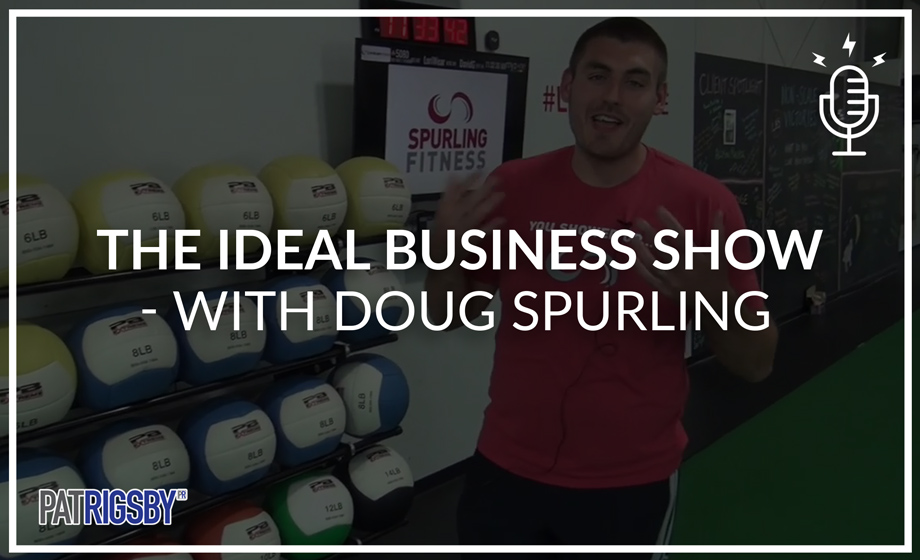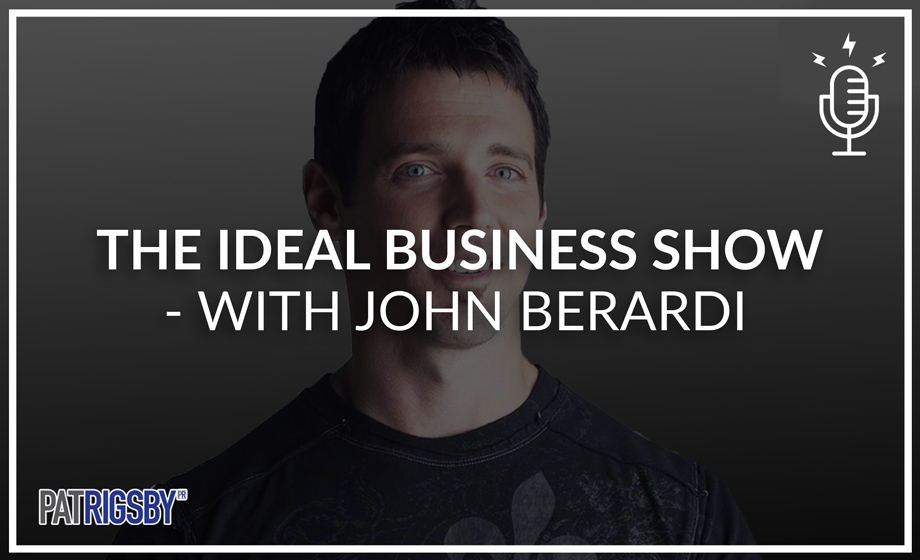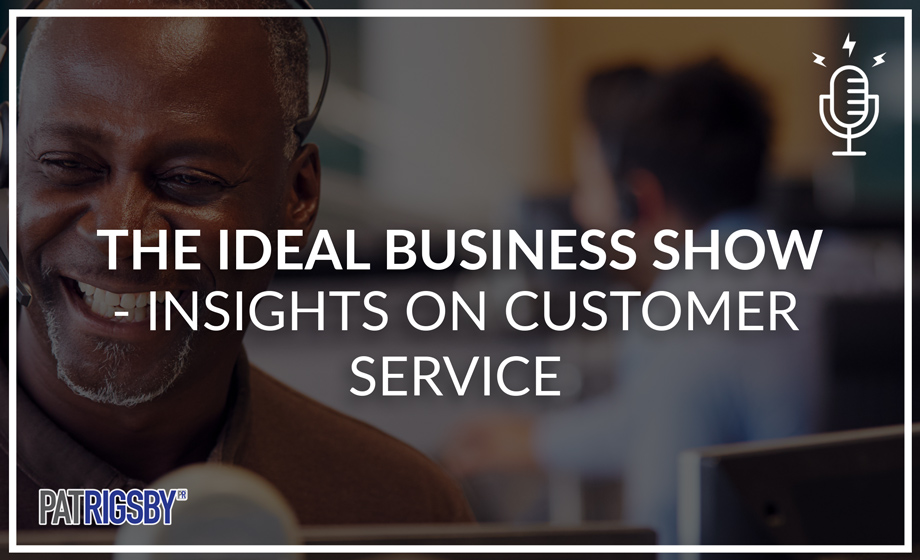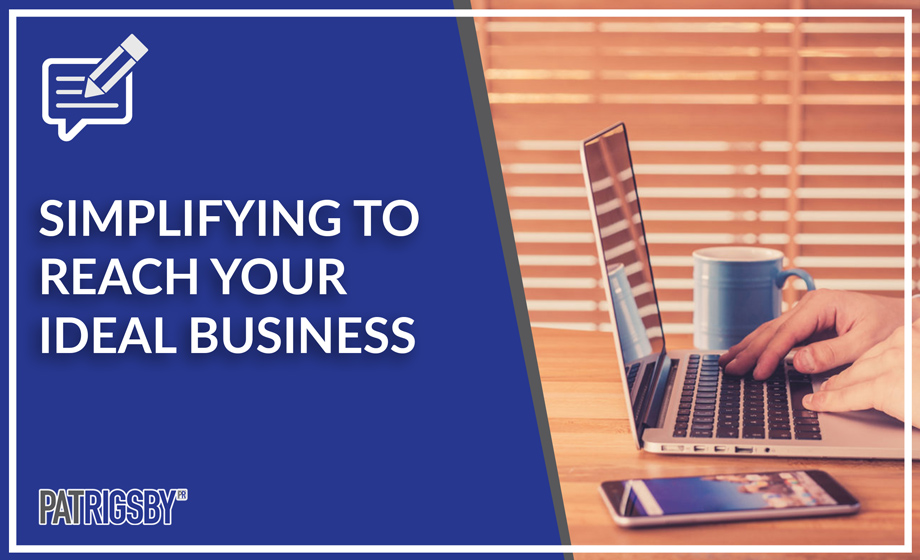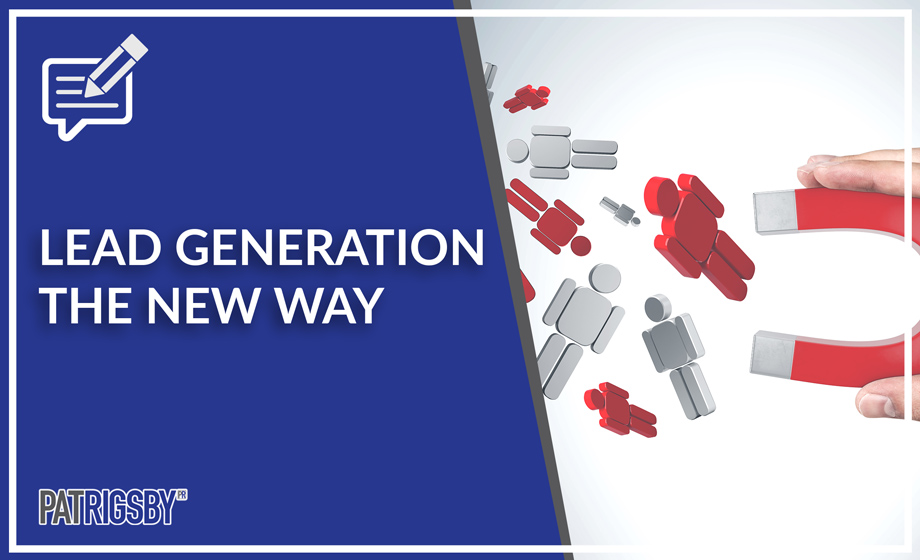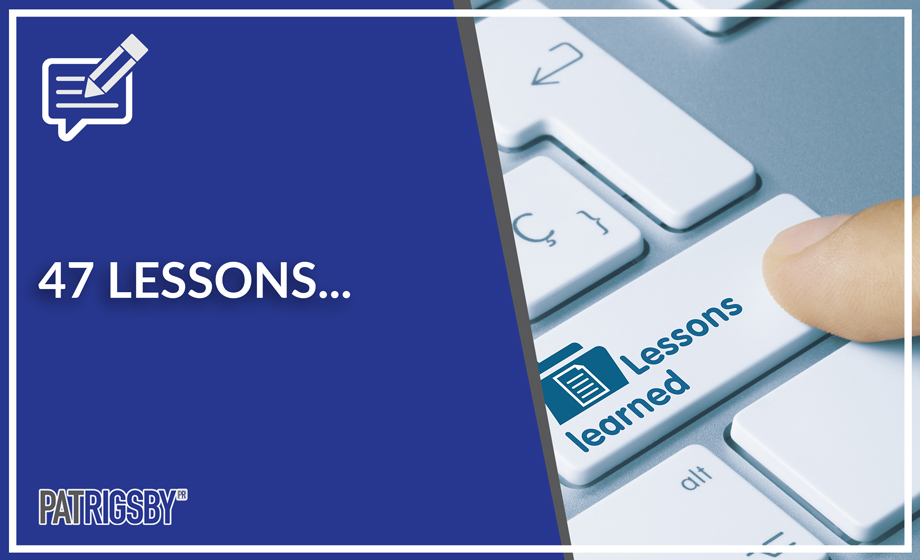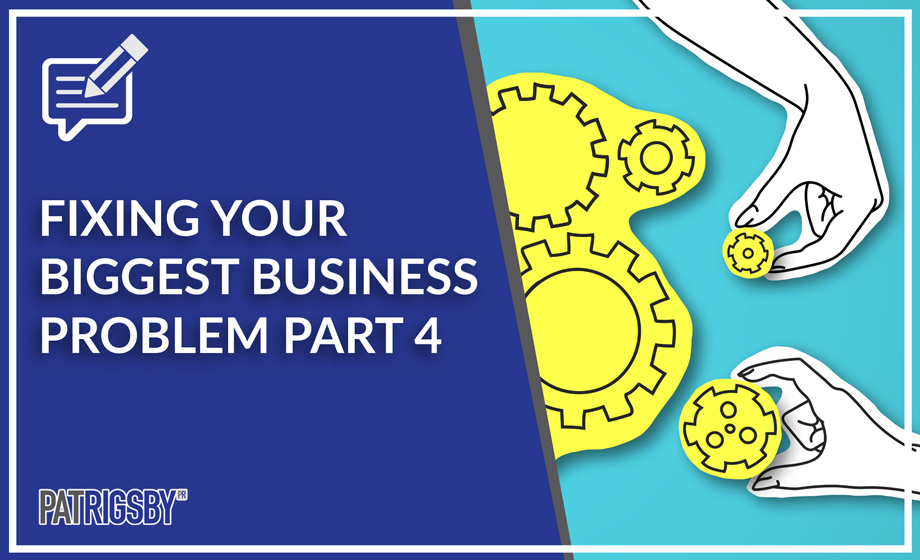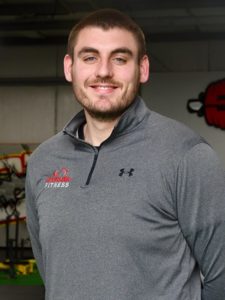 Doug Spurling is the owner of Spurling Fitness, and he’s really done some incredible things in a pretty short period of time. Doug’s one of the younger members of our mastermind group, and not even yet 30 years old. He’s built a powerhouse business. Just kind of moving into this next stage of life, where he a soon-to-be dad and just recently married.
Doug Spurling is the owner of Spurling Fitness, and he’s really done some incredible things in a pretty short period of time. Doug’s one of the younger members of our mastermind group, and not even yet 30 years old. He’s built a powerhouse business. Just kind of moving into this next stage of life, where he a soon-to-be dad and just recently married.
Pat: Doug, let’s get a little bit of the background here. Let’s talk about how you got started as a fitness business owner.
Doug: I’ll go way back to when I was 14, which for me is only 14 years ago. I got introduced to the health and fitness field working in a hospital, actually, as a physical therapy aide. That was my first job at 14 in high school. Worked as a physical therapy aide, then transitioned into the nursing home world and actually worked with Alzheimer’s and dementia patients in the later half of high school and into the summers of college. Went to college here in Maine. One of my college professors has really become one of my mentors, and he kind of introduced me to the fitness world.
I have a good personal story with weight loss. I was in high school pushing 400 pounds. I think my highest was 386 pounds. In-between the high school and college transition, was able to drop what ended up being well into 100 pounds going into college. Then, my mentor at the university, kind of introduced me to the fitness world. Worked in a commercial gym throughout college as starting at front desk and then, obviously, doing the standard, once I got my certification, personal training up here in Maine. There’s two gyms in our town in addition to ours, and competition is really not a direct concern geographic-wise. A lot of people drive a good amount of distance up here to come to a facility.
Anyways, I realized that, as I was getting ready to graduate, I always had an interest in business. My mom is an accountant, so kind of got that background. The southern Maine area really didn’t have any training gyms. It was simply commercial gyms and kind of mom-and-pop health clubs. Luckily, I was pretty fortunate to, you know, start to get introduced to your stuff and was involved in a lot of your groups and really realized that a lot of gyms in Maine weren’t helping people. They were just renting them equipment. I did a small Division III collegiate internship after graduating college, and that, right away, told me the private sector is where I want to be. I decided to jump right in and rented a way-in-the-middle-of-nowhere warehouse and started from zero clients and built it from there.
“…and really realized that a lot of gyms in Maine weren’t helping people. They were just renting them equipment.”
Pat: Let’s talk about where you are today.
Doug: Sure. I was fortunate enough two years ago to buy the building that we’re in, so we have 6,500 square feet as well as we’re on a two-acre lot, so we have a good amount of outdoor space that we utilize, parking lot as well as a fenced-in backyard. I was super fortunate enough to find this building on the market two years ago and purchased it. Currently, we are just about, I’m hoping by the time this is actually put out there, at 300. We’re just shy of 300 clients. We have seven staff members, team members, including myself. So, there’s myself, I have one admin, and then five full-time coaches that do all of the training.
Pat: Let’s talk about how you’ve gone from that startup to where you are today.
Doug: When I first started, it was just me, the standard wake-up at 4:30 in the morning to open the doors at 5:00 a.m. and would do all of the sessions. I had a college friend that was kind of in-between careers, and he’s in the Navy. He wasn’t a certified personal trainer, but he would hang out in the gym and help me. We didn’t really have too much traffic flow issues to worry about back then, but kind of man the front desk and fill in here and there if I had to run out, but it was just me for the first six months or so doing all the sessions. We started, actually, I was 21 years old when I started it, so I had no clue what I was doing. We kind of started really trying to please everybody, which I think is one of my first lessons, is you’re never going to please everybody. We’ve created a really, really good niche within our 300 clients. We’re currently, like, over 85% middle-aged moms, female, but we started with, basically, if you were going to give us your credit card, we were going to help you.
“We kind of started really trying to please everybody, which I think is one of my first lessons, is you’re never going to please everybody.”
That was, long-term, it created a little bit of a headache, because we didn’t really have a brand identity in our community. We would work with athletes. We would work with the highly injured. We would work with, obviously, the general population. I think that as much as it was a learning experience, I also think it was good, because it kind of taught me. Then, I’ll get into how we kind of grew the staff. It taught me what we really enjoyed working with. I thought it was going to be more of an athletic population, and we still train athletes. I think sometimes in our training gym world, we forget that we still train athletes. We slam med balls, we push sleds, we slam kettle bells, so we still have that kind of philosophy, but we now work primarily with kind of the mom.
We started working with everybody, and really, a lot of just guerrilla marketing. We used to be closed during the middle of the day, and during the middle of the day, I would just go around printing out fliers and dropping them on windshields and knocking on doors, trying to set up some joint ventures. Really, just kind of the grassroots guerrilla marketing. I was super fortunate the university that I graduated from is just the next town over, so pretty much since day one, we’ve had a really, really strong internship program. What has become one of my good friends was our first intern. He is actually now the director of our facility and kind of runs the operations for me, but he started as an intern, so if I go back to that first year, it’s pretty much me. I started in January, through to about that fall.
Finally, in that fall, he took an internship with us, which was pretty much, at that point, just help me. I didn’t have a structured internship program like I have now. He volunteered, did the internship. As the internship was wrapping up, he wanted to stay around. I wasn’t able to afford him. We were able to grow a little bit more until, finally, it was just me and him. He would run half the day; I would run the other half of the day. Stayed really, really grassroots with that guerrilla marketing. We had a lot of good, successful joint ventures early on with the local chiropractor, the local coffee shop, the local massage therapist. I think nowadays, with the whole Facebook advertising and stuff like that, sure, we do that, but we can’t forget about some of those more guerrilla style marketing, because that’s really what took us off in the early years.
As we started rolling into years two and three, we started really getting a solid internship program, so we had three or four interns every semester. At some point in the early, let’s call it now we’re in year two, it was actually too much, because we didn’t have a lot of structure behind it. But, again, I think a lot of that you kind of learn as you go. We continued to grow in clientele. We really started niching in probably in year three to the more what is commonly my private, small group model. Before that, we were doing classes. We were doing pretty much anything that people wanted. We used to offer nothing that I would recommend nowadays, but TRX specific classes and kettlebell specific classes. Really just showing the equipment and not the actual result.
A lot, thanks to your guidance, we niched really, really hard in year three. By then, it was myself, Josh, and one other coach, who’s still with me. By then, there was three of us. That’s when I really, really started having the ability… I had Trent, who was that third guy, working the morning, Josh would work in the evening, and that really allowed me to step slightly away from the business for even an hour a day to work on systems. I think that is really what shot us forward, was Pat knows I am super analytical, super type A, very process driven. In some sectors of our business, such as creative client experience and engagement, where I look to others on the team, but I really, early on, leveraged systems.
We created a system for everything from how to answer the phone to how a handle session to how to greet to somebody, everything. It’s now to the point where as we bring on a team member, most of them are former interns of ours. We had a really solid internship curriculum. We had a really solid staff onboarding. I always say our back end runs like a franchise. You know, you always hear the common example of Starbucks or something like that. If you get a Starbucks in Maine and you get a Starbucks in Louisville, it’s the same coffee. They make it the same way. So, although I have no goals of that, I do try to run it like that, just because we call it “The Spurling Way” with our business.
“We created a system for everything from how to answer the phone to how a handle session to how to greet to somebody, everything.”
The Spurling Way, it’s we all have agreed to it, but this is the way we’re going to do things. Now, with a team of seven, it’s even super more important for having these clear systems. As we continued to grow, I just kept dialing in the systems and slowly stepping away from the training and working more on the business instead of getting stuck in it. That was really when I saw the large growth, was when I was fully able to… We went from 150 to 250 clients, which seemed like overnight, when I basically removed myself from the training floor and worked purely on the business. Now, it’s more of that strategic chipping away growth as we step over this 300-client boundary. Systems is really, I think… Systems and then that grassroot guerrilla marketing is really what got us to where we are today.
Pat: If you were going to give somebody three tips about integrating systems more effectively in their business or documenting systems or making that a drive in their business success, what would you suggest?
Doug: Sure. I think the best way to think about it is to take a blank piece of paper and write down Pat’s term, the ideal business. Write down the ideal journey of your textbook client, your target client. Write down their journey step by step from the time they inquire all the way through the first day, whether you do a success session, or however you want to onboard them, to their training experience, their first 30 days, their first 90 days, all the way through to, then, if they choose to leave you, what happens? Write that down, what you want that to be. Then, you break that down into sub-headlines. First step is obviously going to be lead inquiry. How are you going to track your leads? Do you have a lead tracker that automatically, when a lead comes in, your admin or you plugs right into the lead tracker and there’s a status note right next to their name? We use a lot of color-coding on our—we use just a basic Excel spreadsheet. I don’t think we need to complicate this more with software or anything like that. We use a basic Excel spreadsheet with their name and the status of do they have a success session booked, yes or no.
This client lifecycle, I think, is where I would recommend starting. If you can take that lead inquiry and then that’s my first, what’s going to happen step by step by step, then, okay, they’re here for their first success session, let’s call it. They’re being onboarded. What are the steps for a success session? Then, you have your membership sales. If you kind of reverse engineer the whole journey and step by step by step break each category down—it’s simply, I think, taking the time to document it as you’re doing it. I’m all for the understanding of you’re not going to be able to delegate everything right off the bat, so you have to carry around a notebook, whatever it is, where you, as you’re doing something, writing it down.
If you have an admin—our first admin, she has gone off to nursing school, but our first admin, what I had her do is any time she did something that we didn’t have a system for, she would just open up a Word document and document everything that she did step by step by step. You know, the analogy of how do you make a peanut butter and jelly. Don’t skip opening up the jar, just like you don’t skip how to sell a membership or how to greet somebody. Document it all. Then, we like to put everything on a cloud base. We use Google Drive. Everything’s on Google Drive. Each system has its own document. We call it place sheets. If you think of the football playbook, you can type into our Google Drive any play, let’s call it, so how to answer the phone, whatever, and there’s a one-page system of how to do that. That’s the ease of it.
“If you kind of reverse engineer the whole journey and step by step by step break each category down…”
If I were to kind of summarize, I would say start with that client lifecycle checklist. That, I think, is our most important document. We have it now condensed to I believe it’s down to three pages, so it doesn’t have to be this big, daunting task. I think people hear policies and procedures, and they think of this big, 100-page manual. When, in reality, if you can just start by getting your client experience super consistent, your clients really… Of course, they want a really good experience, but they want it to be consistent. They want it to be when they show up with coach A on Monday, it’s a similar, repeatable experience on Wednesday with coach B. In order to do that, think of that journey, think of that lifecycle, and take each of those—the lead inquiry, the success session, what’s their first day like, what’s the session itself look like, how long is it, et cetera—and just document it. Then, start implementing it.
Pat: I’m excited to hear what you have to say about kind of this approach to guerrilla marketing.
Doug: Sure. I mean, don’t get me wrong, like you said, we do a solid amount of Facebook advertising, and it works. I can’t really say to maybe a larger population, but we’re in a town here if I go to the grocery store, it takes me three hours to shop for groceries, because I see all of my clients there. Our town is 12,000 people. The Facebook advertising works, but you need to make sure that the other stuff is… I think Facebook advertising works if you have a strong message first and a strong brand identity first. If you’re just putting out cold ads, they’re never going to hold, know, like, and trust. They have to do that before they even—I think we sometimes forget how much it takes, especially for our clientele, the people who are intimidated by the typical gym, the people that they walk into a gym and they have no clue what to do. If that’s your clientele, don’t forget how hard it is for them to hit a Submit button on a lead ad or anything like that, because that’s admitting that they need help, and that’s a giant hurdle that you have to get over.
If you back up from that, it really starts by, I think, having a super strong message about who you are, what makes you different, and what you stand for, your whole values. Then, you can look at what channels are you then going to deliver that through? Facebook advertising is only just one particular channel. Nowadays, we do spend time on the digital channel, but I don’t think we need to push aside more of that guerrilla or let’s all it grassroots marketing. Literally walking down the street to your local coffee shop and saying, “Hey, I’m Doug. Nice to meet you. Here’s what we do. A lot of our clients have coffee here after their workout, after they drop their kids off from school. I’d love to give you more business. Can you tell me a little bit more about what you guys do and what you stand for?”
“Having that reputation in your town where you are the authority, you are the go-to, sure, that’s backed up by digital, but I think you can leverage that, kind of put it under a turbo…”
I think going into those small businesses, think of your target market and where else do they hang out. Sure, they hang out on Facebook, but they also hang out at the coffee shop. They also probably go to some type of restaurant in town frequently. They have their hangout spots. The schools, the banks. I mean, we’ve just been able to, and this is mostly talking joint ventures here, set up an incredible relationship by simply thinking who our target market is, where do they hang out outside of the hours that they’re not with us, and then going to those places and saying, “Hey, how can I help you?” More of that asking for advice or how can I help you first. Then, that law of reciprocity starts saying, “Well, okay, you just sent 10 ladies, they just walked in yesterday and bought coffee, and they happened to be clients of yours, so how can I give you business?” Then, you set up something. It doesn’t have to be anything formal.
We have one formal joint venture with a bank, where they receive a discounted rate to come to our facility. The rest of them are just simply relationships. We don’t have anything formal with the barbershop or the coffee shop or the chiropractor. It’s nothing formal. Salons are another one. If somebody’s there getting their hair cut and they’re like, “Oh, you look great, by the way, where do you go?” Right away, it’s, oh, boom, they go to Spurling. Having that reputation in your town where you are the authority, you are the go-to, sure, that’s backed up by digital, but I think you can leverage that, kind of put it under a turbo, if you have the small business brand authority with the joint ventures and referrals. All of that stuff is really tied together.
Charity workouts. We just did a charity workout for the American Diabetes Association and a local bike race that fundraises that. You have other businesses in town that are promoting our charity workout because of the relationships that we’ve set up with them over the last couple of years. A Facebook ad is not going to increase that attendance. It’s going to be the other businesses pushing that. I think if I could solidify that with a tip, it would be get off your butt, get out from behind a computer, from the keyboard, and go introduce yourself to the other small businesses in your town.
Pat: Do you have any other tips or advice for somebody who would like to kind of evolve their role in their business and accelerate their progress as an entrepreneur?
Doug: Yeah. Where my mind goes right away with that question is you have to know where you’re going. I think I have gotten to where I am today because I have really, really, really clear goals and vision where I want to go as Doug Spurling, not even as Spurling Fitness. I think it starts with you. What are your values? What’s important to you? I know, as Pat mentioned, my wife is pregnant and we have a baby coming in August. I want to be around for that kind of stuff. I don’t want to be working 14 hours a day at the gym. I’ve, since I was 21, known that and said, “Okay, what does the business have to look like in order for that to happen?” A lot of it is starting with your values, starting with your vision. I really resonate with the whole ideal business. What does that look like? Five years from now, what does success look like in saying, “Okay, what do I want my role to be? If I want my role to be not involved in coaching, how many clients do I need to hire another coach? Do I have the systems in place to hire another coach? Maybe I need to hire an admin.” What does that look like? What’s the dollar amount associated with that?
“I think a lot of people are so caught up in the day-to-day grind of just working in the business.”
Really taking a step back and saying, “Okay, what is my ideal business? What’s my ideal role?” Then, reverse engineer what needs to happen in order for that to happen. How many coaches do I need to have? It’s not a coincidence that we have five coaches and one admin. That’s been the goal since, I would say, year three, when I really started dialing the stuff in. It’s no coincidence that we’re at 300 clients. It’s reverse engineering. Just like you spend time reverse engineering, okay, how many clicks do I need to get on this ad in order to get X number of leads, reverse engineer your life and say, “Okay, at 40, where do I want to be? What’s my day-to-day look like? What’s my ideal day?” Write down what do I want to do from when I wake up. All that stuff, I think, is so important. Then, you can get into the tactical like, okay, so if I want to be home, working from home, what does the business itself need to look like? How many clients do I need, how many coaches do I need, et cetera. Then, that turns into, okay, how many leads do I need and you get more into the tactical stuff.
I think a lot of people are so caught up in the day-to-day grind of just working in the business. That saying can sometimes be overused, like working in the business versus on the business, and I get that, but I do think it has some merit where if you are so caught up working in the business day to day, you have to find a little bit of wiggle room, just starting with pulling out that pad of paper and saying, “What is my ideal business? Where do I want to go?” Then, chipping away by reverse engineering what that looks like.
P.S. – 6-Weeks of Coaching…Free.
Get a surge of new clients and revenue over the next 6 Weeks with ZERO FEE and no obligation to continue?
If you’re a current business owner who wants to add 50K or more in annual revenue over the next 12 month, you can Test Drive our coaching program for 6 Weeks with no fee or even an obligation to continue as a way to demonstrate how we can help you grow your business.
No strings attached. No obligation. You get our best coaching & tools…and hopefully, you’ll love it enough that you want to keep working together.
Would you be interested in discussing?
If so, email me here with ‘interested’ in subject line and we’ll set up a chat.
